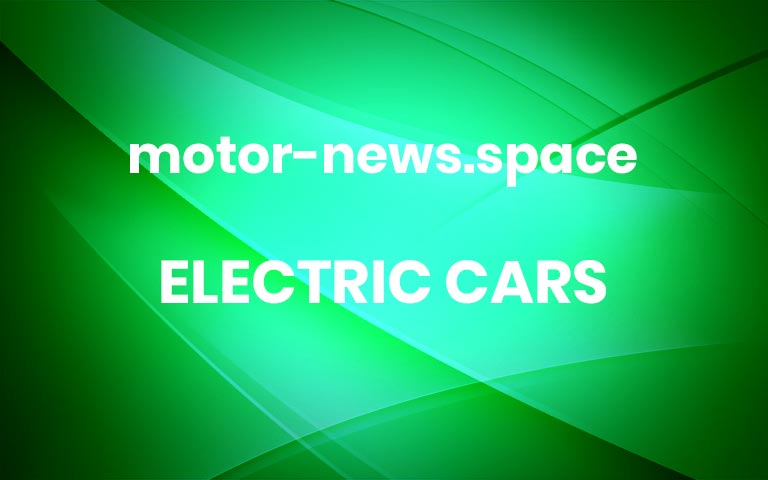Mahindra BE6In addition to its array of advanced features, Mahindra BE 6 also has the highest range in the mass-market EV segment in India
Some products are way ahead of their time, unlocking entirely new experiences that users never knew were possible. In the Indian automotive space, a relevant example is the Mahindra BE 6. Launched in November 2024 alongside the XEV 9e, the Mahindra BE 6 is available in the price range of Rs 18.90 lakh to Rs 26.90 lakh (Ex-Showroom*). Let’s explore some of the standout USPs of the Mahindra BE 6, which make it a truly futuristic electric car, both in form and function.
1). Radical design, cockpit-inspired interior
Engineered to be a head-turner, the Mahindra BE 6 embodies futuristic intent through its bold, sporty design. The aerodynamic contours and sharp geometric accents ensure a truly captivating road presence. Other distinctive features include a striking front fascia, coupe-SUV silhouette, flush door handles, C-shaped LED DRLs and sharp, angular panelling all across.
As of now, the variant comes equipped with 18-inch aero-spec alloy wheels. Rear profile balances sporty aesthetics and minimalist elegance, as evident with the dual spoilers, full-width LED light bar and a chunky diffuser.
Inside, the BE 6 continues the futuristic theme with a tech-forward cabin. It feels like the cockpit of a warp-drive spaceship straight out of a sci-fi movie. The SUV creates an immersive experience with its driver-centric dashboard and a race-ready digital cockpit design, inspired from Formula E racing cars.
Other highlights include dual 12.3-inch screens, two-spoke steering wheel with illuminated BE logo and touch-enabled controls. The futuristic vibes are further enhanced with the roof-mounted toggle switches and aircraft-style gear selector.
Ambient lighting highlights the layered dashboard, while the use of sustainable materials aligns with its electric ethos. Infinity roof enhances the premium experience and its inbuilt lighting can be programmed to create the perfect mood.
Mahindra BE 6 offers class-leading cabin space, with ample headroom, shoulder room and legroom. BE 6’s INGLO, flat skateboard architecture has no central tunnel and utilizes a high energy-dense battery pack. These features maximize cabin space for enhanced passenger comfort, without compromising on range. Users get ample legroom, flexible seating and a premium cabin experience. BE 6 ensures a comfortable and enjoyable experience for all occupants, whether navigating city traffic or cruising on long drives.
Users can expect a smooth and quiet drive experience, thanks to BE 6’s best-in-class NVH levels. One of the key factors making it possible is the high torsional stiffness of 34.8 kNm/deg.
2). Immersive audio – 16-speaker Harman Kardon with Dolby Atmos
For music lovers, the Mahindra BE 6 offers an audio experience so rich, it feels like driving through a concert hall. Equipped with a 1400W amplifier, Dolby Atmos 5.1.2 and Harman’s Quantum Logic Immersion (QLI) technology, the BE 6 cabin transforms into a 3D acoustic space.
Offered for the first time in India in this segment, the Dolby Atmos 5.1.2 delivers an immersive audio experience, enveloping listeners in rich, three-dimensional sound. Whether it’s movies, music or games, everything feels lifelike. Users enjoy enhanced clarity, depth, and realism, as sounds move naturally around them, from subtle ambient effects to powerful action sequences.
The advanced audio system delivers a rich, concert-like experience – whether you’re immersed in soulful vocals, deep bass tracks, heavy beats, or even the crisp layers of classical, jazz or acoustic music. Every genre comes alive with stunning clarity and depth.
Adding to the experience is Virtual VenueScapes, which recreates iconic acoustic environments inside the cabin. A wide variety of audio environments can be simulated such as a theatre, concert hall or stadium. VenueScapes locations available with BE 6 include Boston Symphony Hall, Royal Opera House, Mumbai and Wembley Stadium – London. Signature tones and the Vehicle Emotion Sound System (VESS) round off a uniquely immersive, futuristic in-cabin soundscape crafted for true audiophiles.
3). Cocooned safety with ADAS L2+ – 5 radars and 12 ultrasonic sensors
Cars of the future will be a lot safer, something that Mahindra BE 6 already delivers with its intelligent safety systems. The hi-tech ADAS L2+ setup featuring an array of radars and ultrasonic sensors effectively detects and responds to potential hazards. Whether it’s keeping a safe distance from other vehicles or assisting with lane changes, everything gets done in a seamless manner. The system can respond to risky scenarios much faster than humans, ensuring optimal safety of all passengers.
– > High Performance Mobileye 5th Generation EyeQ 6L – This advanced automotive-grade system-on-chip (SoC) ensures lightning-fast visual processing and intelligent decision-making. It is crucial for a safer and smarter driving experience.
– > Calibrated for complex India road conditions – Driving on Indian roads presents an entirely new set of challenges. That’s why BE 6’s ADAS setup has been especially designed to tackle the ever-evolving, dynamic nature of Indian road conditions. Special features have been integrated such as animal and barricade detection.
– > 20+ ADAS features – Mahindra BE 6 comes with more than 20 ADAS functions. It includes Intelligence ACC, Driver Initiated Lane Change Assist, Evasive Steering Assist, Emergency Lane Keep Assist and Smart Pilot Assist.
– > 5-star BNCAP Rating – Mahindra BE 6 has received 5-star rating in Bharat-NCAP crash tests. It scored 31.97/32 for adult occupant protection, which is among the best for vehicles tested by Bharat-NCAP. A perfect-32 score is for XEV 9e, which means the BE 6 missed that by an extremely narrow margin of just 0.03. BE 6 also ranks among the best in child occupant protection, scoring 45 out of 49.
4). Powerful performance – 0 to 100 in 6.7 seconds
Mahindra BE 6 is designed for truly exhilarating experiences. Especially the powerful acceleration that pins you to your seat and leaves you craving more. Propelled by a 210 kW (285 PS) electric motor, the BE 6 can accelerate from 0 to 100 km/h in just 6.7 seconds. Braking is equally powerful, with 100 to 0 km/h achievable in just 40 meters. BE 6 is equipped with intelligent adaptive suspension that has 15 milliseconds of real-time control of damping force.
With a certified range of 683 km (79 kWh), range anxiety is a thing of the past with the BE 6. Even in real-world conditions with AC ON, the BE 6 (79 kW) has consistently delivered a real-world range of 500+ km in metro cities (internal tests). BE 6 with the 59-kWh battery pack has a certified range of 557 km. Real-world range is 400km+ in metro cities (internal tests).
Mahindra BE 6 has drive modes of Default, Range, Everyday and Race. The Default drive mode is especially designed for folks who are transitioning to BE 6 from an ICE vehicle. It mimics the performance and feel of traditional ICE SUVs, offering familiar throttle response and driving dynamics.
This thoughtful tuning helps first-time EV users feel at home, reducing the learning curve. Default drive mode of BE 6 ensures comfort, confidence and control right from the first drive. It gets you acquainted, before you can unleash the SUV’s full potential.
Users can choose the appropriate option based on their preferences or driving conditions and environment. Another advanced feature is adjustable regenerative braking with 4 levels – L0, L1, L2 and L3. Range can be optimized with the L3 level. There is an Auto mode as well that automatically chooses the most appropriate regen level.
5). MAIA – The futuristic neural network, the brain powering BE 6
Derived from the Sanskrit word for magic, MAIA is an advanced tech ecosystem powered by the Qualcomm Snapdragon 8295 chipset. Built on a 5 nm process node, the Qualcomm Snapdragon 8295 chipset is a technological marvel with capabilities like 200K DMIPS, 46 TOPS and 3000 GFLOPS. It can seamlessly handle complex tasks and process trillions of operations per second. It ensures a high level of intelligence, superior performance and instant responsiveness across all aspects of man-machine interactions.
With the advanced Qualcomm 8295 chip, the Mahindra BE 6 delivers a smooth, lag-free experience every time you drive. The system stays highly responsive and you are always in control, whether you are accessing voice commands, infotainment or ADAS features. You experience smarter, seamless driving, where everything feels instant, intuitive and effortlessly connected to your needs on the road.
Driver occupant Monitoring System (DOMS) – Eyedentity – One of the key functions under MAIA is the Driver Occupant Monitoring System or DOMS. It can detect fatigue/distractions and issue alerts accordingly, thereby improving safety and avoiding accident risks. Equipped with a 5MP camera, DOMS also offers first-in-segment features such as Zoom call from in-cabin and car selfie. Other functions include picture click in cabin with memory album, occupant ID and video call from inside the cabin.
VisionX (ARHUD) – With the MAIA-powered ARHUD (Augmented Reality Head-up Display), Mahindra BE 6 users can access critical driving information that is projected directly onto the windscreen. This is a lot more convenient and also enhances safety aspects. It seems quite similar to space-age technologies often seen in sci-fi movies. By overlaying real-time data onto the road view, the ARHUD makes driving both safer and more intuitive.
Users can access an expansive field of view via a wide 9×4″ display or up to 75″ at 10m for immersive visuals. Other features include longer projection distance / longitudinal distance at min of 100 meters, smart auto eye detection for auto HUD height adjustment and customizable alerts with intuitive HMI.
AutoPark – Powered by MAIA, the AutoPark function available with Mahindra BE 6 takes full control of parking manoeuvres. It is especially designed to park in tight spaces, which is often the case across urban centres in India. AutoPark supports parallel and perpendicular parking and has various other functions such as auto reverse assist, remote parking (mobile and key) and virtual parking (On Screen HMI) –1st OEM in India.
LiveYourMood by MAIA – With its customizable ambient lighting system, BE 6 allows users to create the perfect mood. The various functions available under LiveYourMood by MAIA include the following.
• Theme based Pre-set with a synergy of 3 colours• Nature themes infused with tranquil music integration• Custom colour setting in 2D space capable of 16 million colours (TBC) (1st in India)• Dual colour gradient for Infinity Roof• Multi zone colour as per individual’s choice• Synced with live music for immersive experience• Sync with Driving behaviours (Acceleration, Braking etc)
App suite with 69 apps – FunWithMAIA unlocks a wide variety of music, infotainment and entertainment options for users. A total of 69 apps are available, covering music, entertainment and productivity. It includes 29 video apps, 12 audio apps, 2 gaming apps, 15 shopping apps and 11 connectivity apps.
In conclusion, Mahindra BE 6 sets a new benchmark in driver engagement with its bold design and race-ready cockpit. It’s a level of driver-centric design unmatched in its segment, built for those who love to drive.
The premium sound system, advanced Level 2+ ADAS, powerful performance and state-of-the-art MAIA tech ecosystem create a vehicle that feels like it’s arrived from the future. BE 6 blends performance, style and innovation, making it a standout in the electric SUV market.
* Charger optional under select conditions: Customers may choose not to purchase a company-supplied charger if (i) their home/office lacks private charging provision, (ii) they already own a compatible charger meeting Mahindra’s safety standards, or (iii) multiple Mahindra EVs are being purchased for the same household. Otherwise, a 7.2kW AC charger (Rs 50,000) or 11.2kW AC charger (Rs 75,000) must be purchased with the vehicle. More



